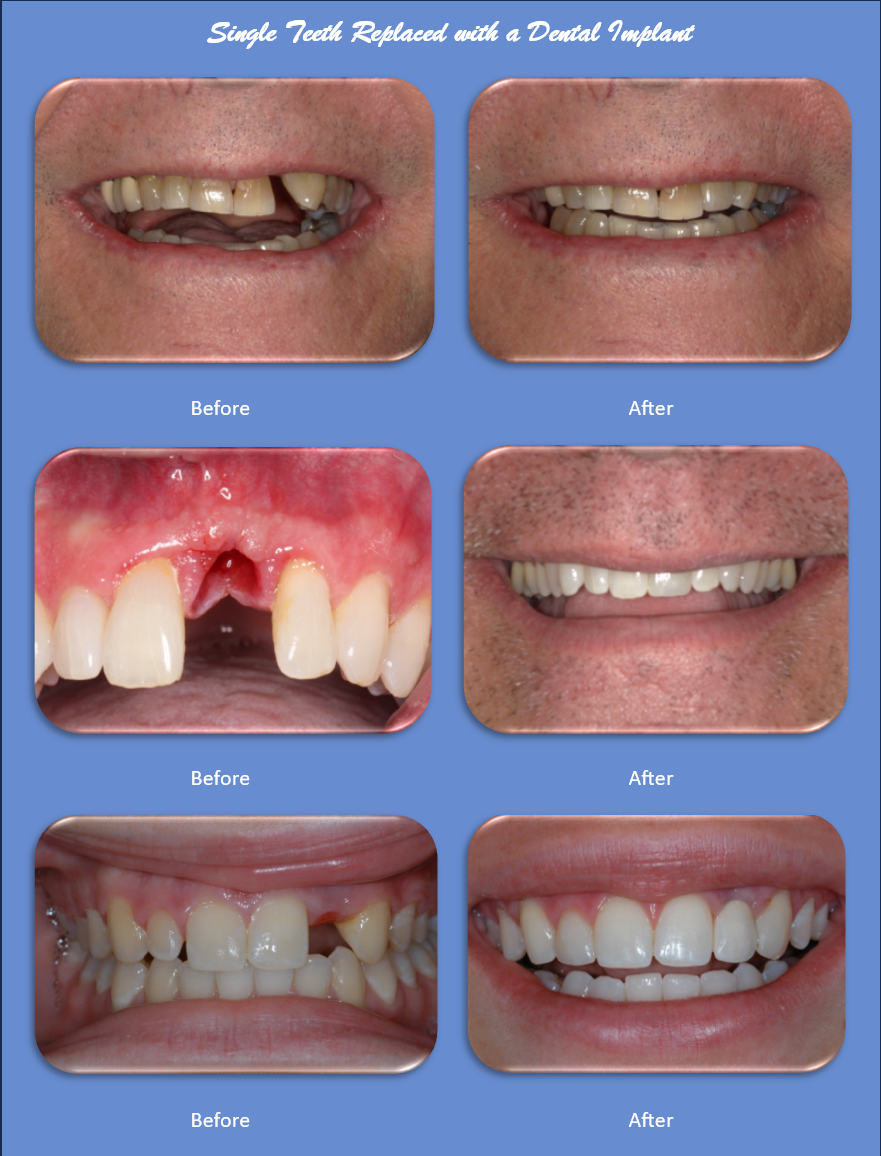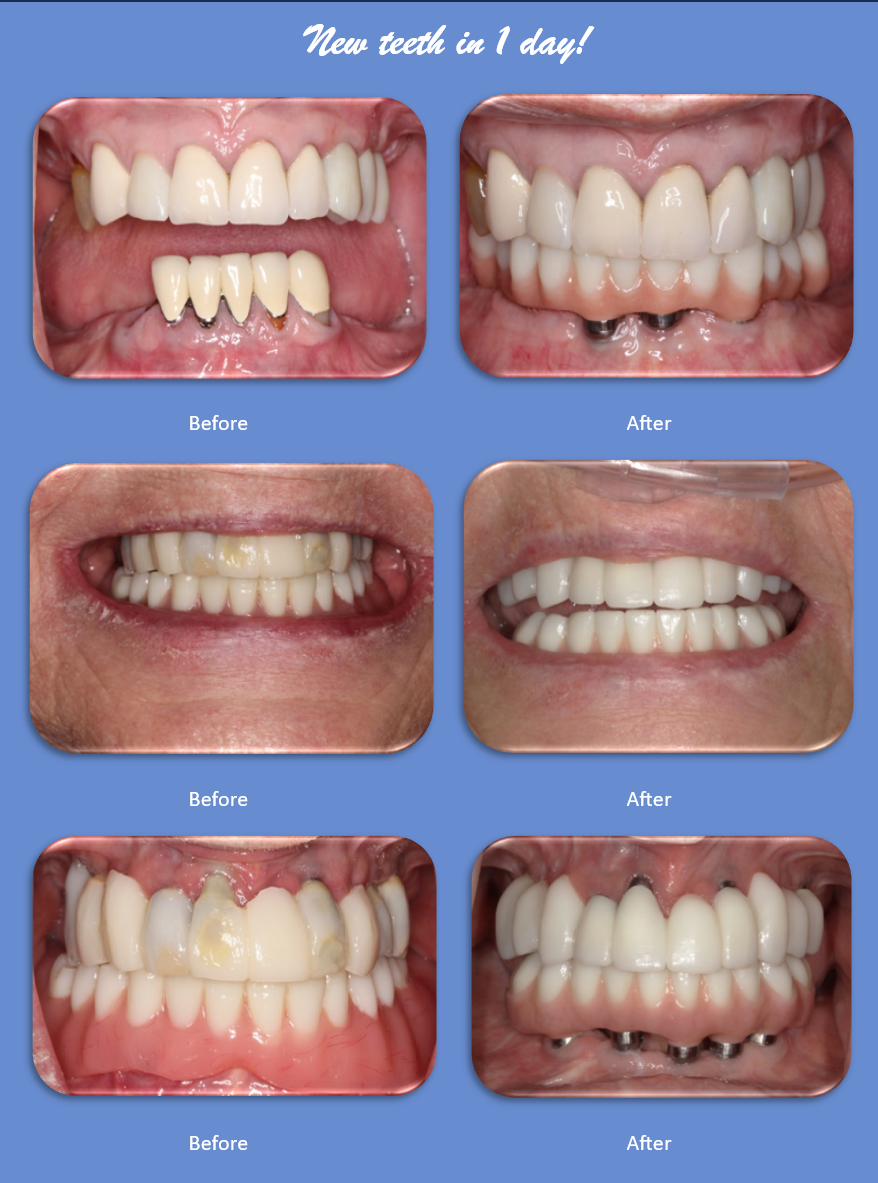Implant Dentistry
What are the teeth that are supported by implants?
The restoration can be a single tooth on a single implant or several teeth on several implants. It can be 3 or 4 teeth supported by 2, 3, or 4 implants. Or it can be a full arch of teeth on eight or more implants. It all depends on the amount and quality (hardness) of bone and the location and type of teeth being restored. A person with lots of good-quality bone can have larger implants placed, and thus, fewer implants are required to carry the load. A person with less bone or poorer quality bone can still have dental implants, but it may take more implants to carry the load. Individual porcelain teeth that are fixed in place and are not removable by the patient are usually the best objective if the amount and quality of bone are adequate. Other situations dictate the use of dentures attached to implants using clips. These are held in place securely but are removable by the patient. Dr. Pate will evaluate your bone and give you some guidance as to which restoration is right for you.
What is the process like?
There are two phases: implant placement followed by attachment of teeth. The implants are placed and completely covered with gum tissue. After the integration (or fusing) period of 2-6 months, small incisions are made over the implants to uncover them. Healing caps are placed over the implants to form an access point to the top threads of the implant. Posts (often custom-made posts) can be securely threaded into these top threads. Artificial teeth can be firmly attached to these posts. The entire process takes, on average, 4-8 months. Patients wear temporary teeth and eat a softer diet during this process. Temporaries take on different forms depending on the particular case.
The most recent advances in dental implant technology involve immediate or early loading. This is where, under select circumstances, teeth can be placed on the implants very soon (1-6 weeks) after implant placement. These cases must be selected carefully, but when possible, it greatly simplifies the process.
Dental Implants are a team effort between Dr. Pate and one of several fine oral surgeons. Once the plan is established, Dr. Pate sets the case up and directs the surgeon as to the exact location to place the implants so that the final artificial teeth will be properly positioned. Dr. Pate will then design and prepare the temporary teeth to be worn during the integration period. After the implants are uncovered, Dr. Pate will fabricate and place your final artificial teeth.
Teeth in a Day
New implant technology allows patients to have teeth attached to dental implants the same day. Lots of planning goes into these cases so that the teeth can be placed on the same day. Certain criteria have to be met, including the quality (or hardness) of the bone, the number of implants involved, and the logistics of scheduling. Many cases that can not be done in 1 day are able to have teeth placed in as little as two days to 1 week from the time the implants are placed to the time the teeth are attached. Dr. Pate will evaluate and discuss the particular details of your case with you at the time of your consultation. The comprehensive exam will take 1 to 2 hours depending upon the level of complexity.
What if I do not have enough bone?
Bone grafting can be done for patients who do not have enough good-quality bone. This can be discussed on a case-by-case basis. Sinus modification is another very common method of securing the extra room needed for implant placement, as well as various methods of onlay grafting.
Who can benefit from dental implants?
Anyone who has lost a tooth can benefit from a dental implant. Bone starts to dissolve as soon as teeth are lost. If many teeth are lost, an excessive amount of bone will be lost, and you begin to see the "sunken aged" look because of the lack of support for the lips and cheeks. This can lead to a person looking prematurely older. Healthy dental implants preserve the bone and help prevent the appearance of premature aging. Implants should be placed as soon as possible after the loss of a tooth to preserve the bone and its healthy appearance.
Single Teeth Implants Examples

Full Arch Implants in 1 Day

Discover the benefits of dental implants. Call us at (863) 967-1233 for a consultation.






